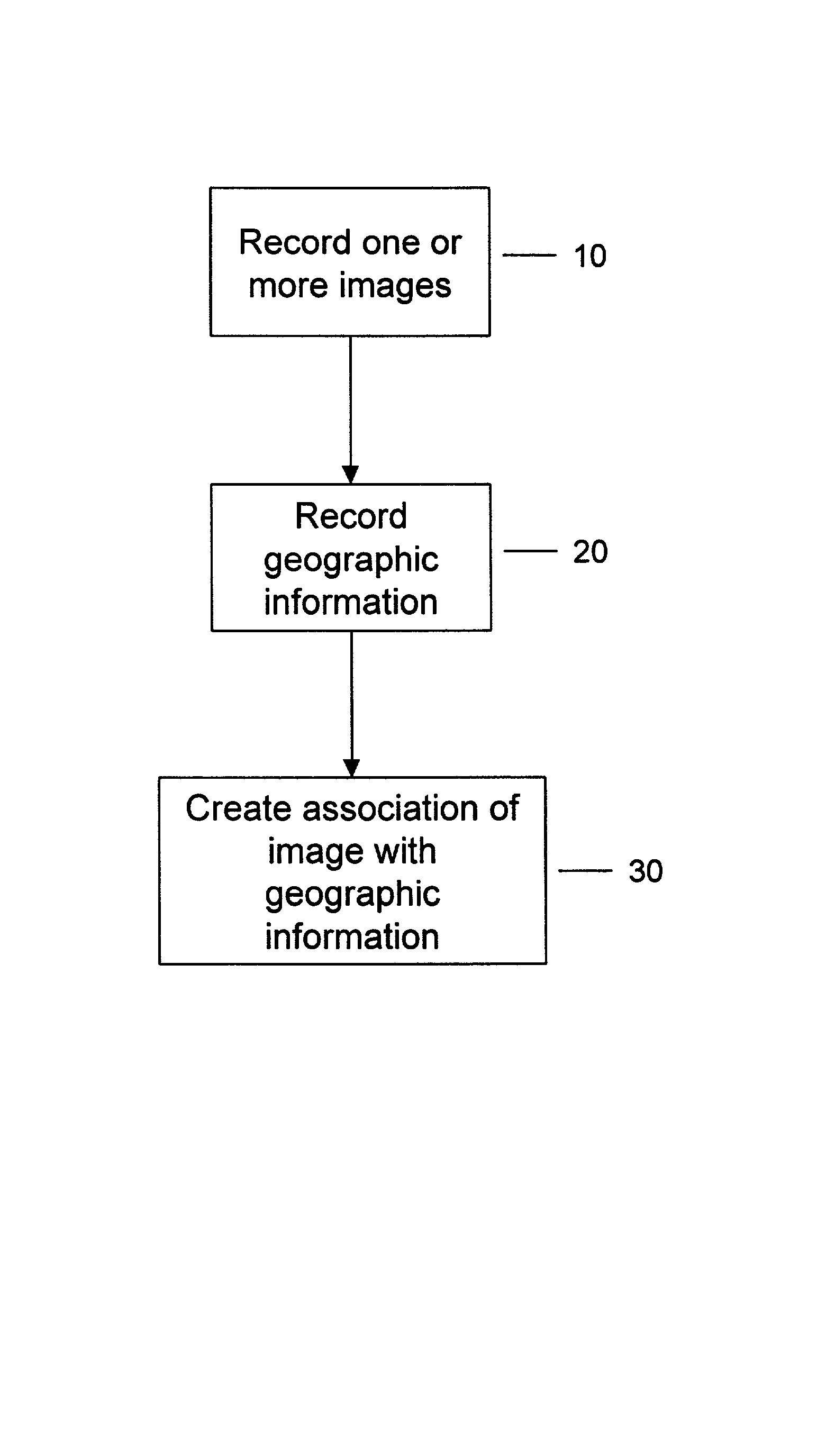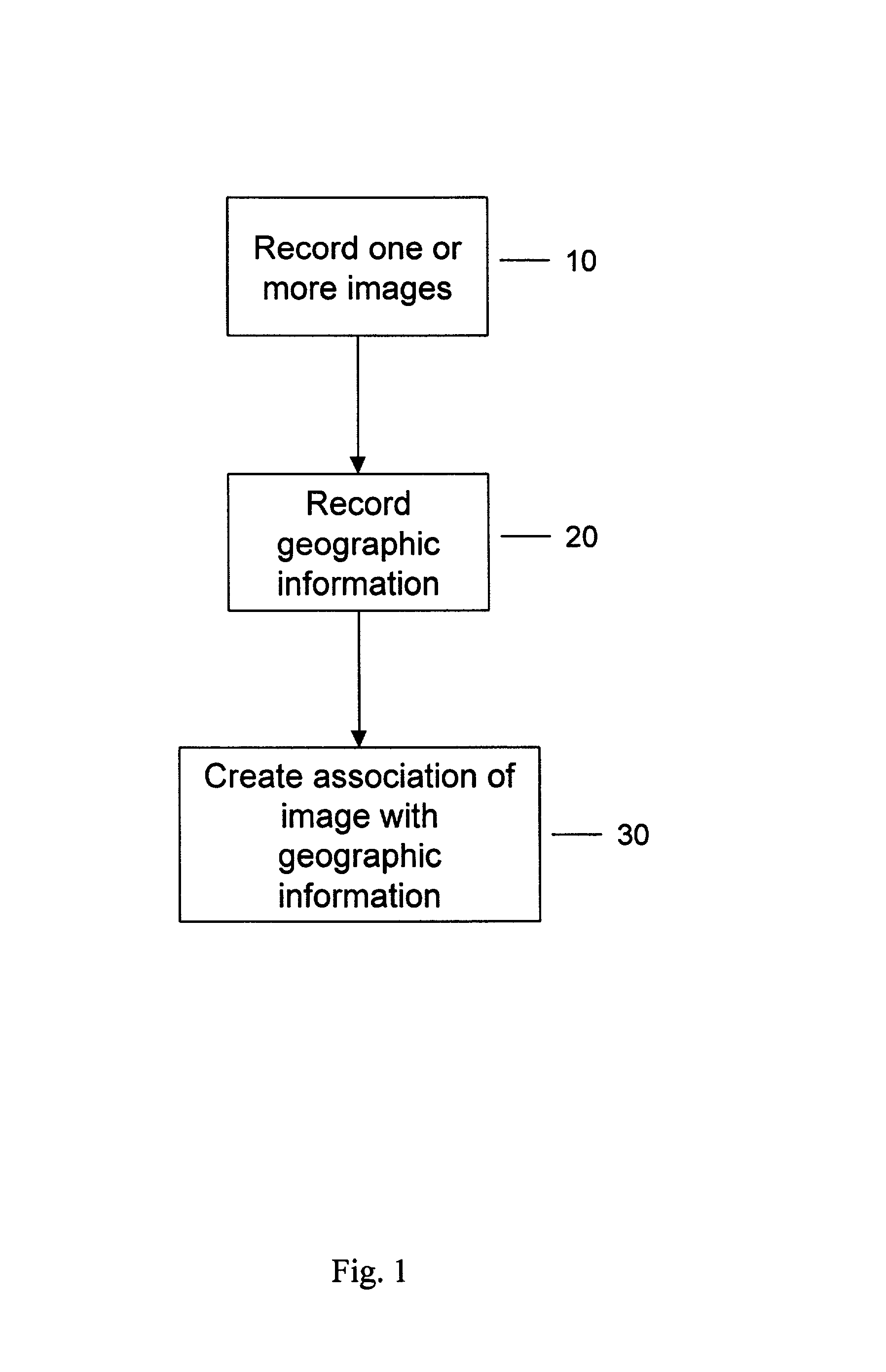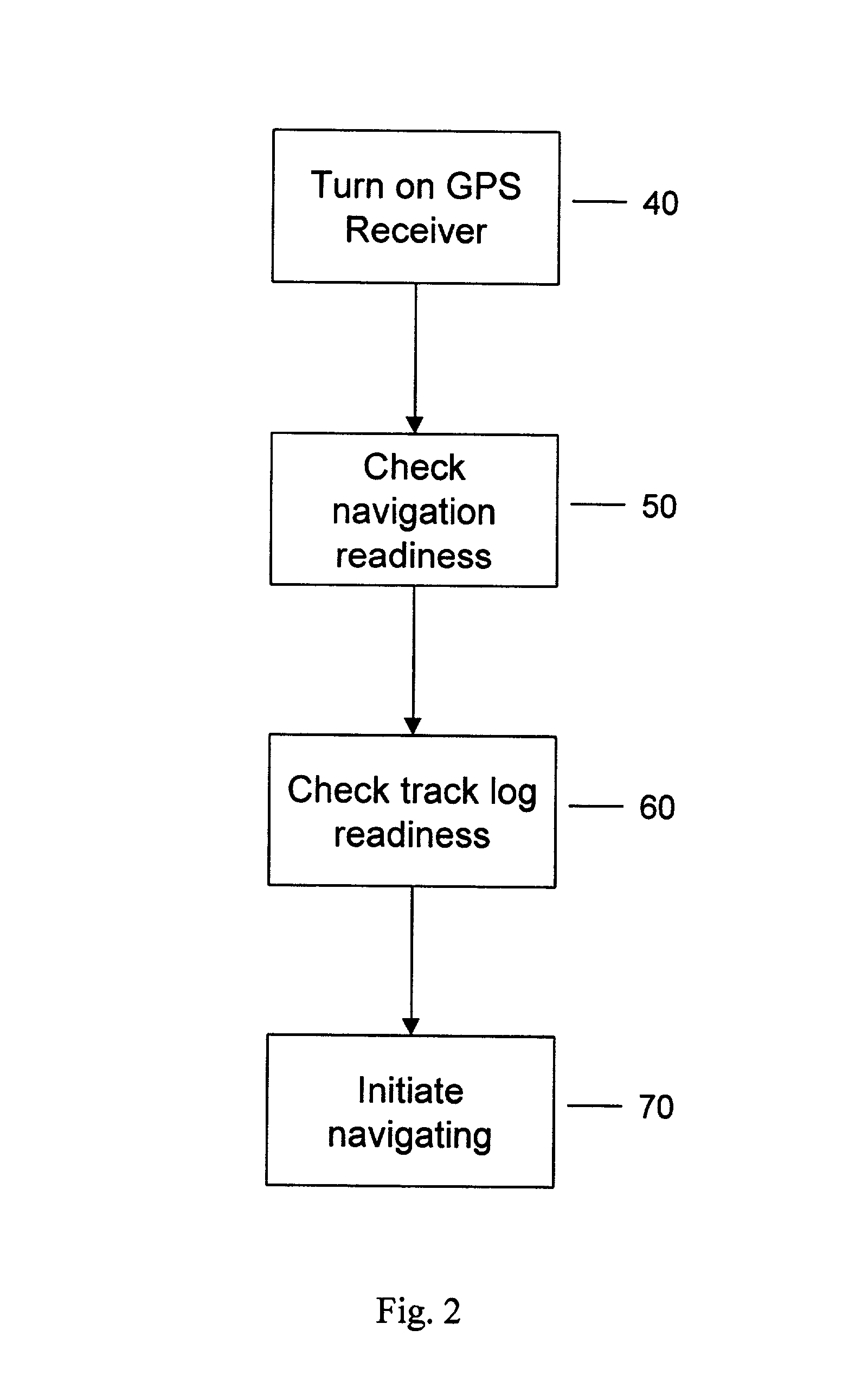Method for matching geographic information with recorded images
a technology of geographic information and recorded images, applied in the field of mapping geographic information with recorded images, can solve the problems of labor-intensive processing and easy errors, and achieve the effects of accurate conversion, convenient location, and simple operation minimizing the possibility of errors
- Summary
- Abstract
- Description
- Claims
- Application Information
AI Technical Summary
Benefits of technology
Problems solved by technology
Method used
Image
Examples
Embodiment Construction
[0025] FIG. 1 is a flow chart of the overall decision logic for automatically matching images with its geographic information, in accordance with a preferred embodiment of the present invention.
[0026] FIG. 2 is a flow chart describing in more detail an exemplary step of recording geographic information, as shown in FIG. 1.
[0027] FIG. 3 is an illustration of a time display screen of the receiver.
[0028] FIG. 4 is a flow chart describing in more detail an exemplary step of creating an association of an image with its geographic information, as shown in FIG. 1.
[0029] FIG. 5 shows an exemplary screen shot of the GPS display screen.
DETAILED DESCRIPTION OF EMBODIMENTS
[0030] The present invention relates to a method for automatically matching recorded images with geographic information corresponding to the geographic location that the image was recorded. Referring now to the figures, wherein like reference numerals indicate like elements / steps, in FIG. 1, there is a shown a flow chart of th...
PUM
 Login to View More
Login to View More Abstract
Description
Claims
Application Information
 Login to View More
Login to View More - R&D
- Intellectual Property
- Life Sciences
- Materials
- Tech Scout
- Unparalleled Data Quality
- Higher Quality Content
- 60% Fewer Hallucinations
Browse by: Latest US Patents, China's latest patents, Technical Efficacy Thesaurus, Application Domain, Technology Topic, Popular Technical Reports.
© 2025 PatSnap. All rights reserved.Legal|Privacy policy|Modern Slavery Act Transparency Statement|Sitemap|About US| Contact US: help@patsnap.com



